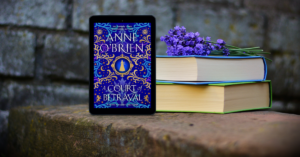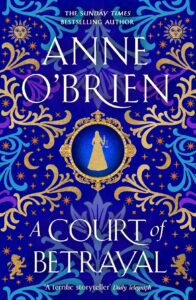NEW YEAR GIVEAWAY 2025
2 SIGNED COPIES
A COURT OF BETRAYAL
LEAVE A COMMENT AT THE END OF THIS POST FOR A CHANCE TO WIN
ALL’S FAIR IN LOVE AND WAR…
The Welsh Marches, 1301
Strong-willed heiress Johane de Geneville is married to Roger Mortimer, Earl of March, at just fifteen years old.
Soon Johane finds herself swept up in a world of treacherous court politics and dangerous secrets as her husband deposes Edward II and rules England alongside Queen Isabella.
Yet when Roger is accused of treason, she is robbed of her freedom and must survive catastrophic events in her fight for justice – with her life, and her children’s, hanging in the balance…
Will she pay for her husband’s mistakes, or will she manage to escape from a terrible fate?
‘A fantastically gripping story of love and betrayal, told with the masterful skill of a passionate storyteller. It kept me riveted until the last page!‘ BARBARA ERSKINE
‘Anne O’Brien crosses swathes of time seamlessly. A gorgeous bouquet of a novel. Stunning’ CAROL McGRATH
‘Tremendous and engrossing’ NICOLA CORNICK
‘A riveting and immersive story of a woman’s strength and resilience’ ELIZABETH CHADWICK
LEAVE A COMMENT AT THE END OF THIS POST FOR A CHANCE TO WIN


